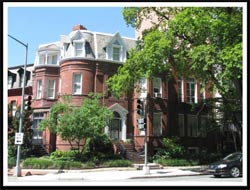
The Brigadier General George P. Scriven House, located at 1300 New Hampshire Avenue, N.W., at the intersection of New Hampshire Avenue and N Street, currently serves as the headquarters building of the National Society Colonial Dames XVII Century. The impressive, 3-story townhouse typifies the high Victorian, upper-class home found in DuPont Circle in the late 19th century. General Scriven is most associated with the development of heavier-than-air aviation.
Brigadier General Scriven was the third owner and the second resident of the property. Scriven and his first wife, Bertha, purchased the property in 1893 and shared the house with their two daughters, Elizabeth and Katherine. Following Bertha’s death in February 1914, Scriven married Elizabeth McQuade in October 1915. The couple remained in the house until 1918, when they began leasing the property, before finally selling it in 1928.
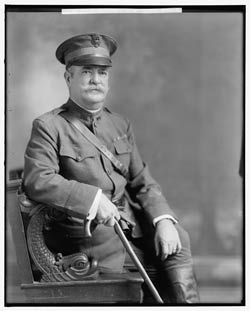
When the Scrivens purchased 1300 New Hampshire Avenue George was in the middle of his military career, which would peak during his time at the house. His career in the military had begun with graduation from West Point in 1878, which led to service with infantry and artillery units before a transfer to the Signal Corps in 1890. In March 1913, George P. Scriven was promoted to Brigadier General and appointed as the seventh Chief Signal Officer of the Army by President William Taft. The Corps was formed in 1860, and as it continues to the present, provided communication and information systems for the armed forces.
At the time of Scriven’s appointment as Chief Signal Officer, aviation was still overlooked as an important component of the military. The first major advance had come with the creation of an Aeronautical Division within the Army’s Signal Corps in 1907. Although it was the first heavier-than-air military organization in the world-and predecessor of the U.S. Air Force-in its early years, the Aeronautical Division was limited by both a lack of funding and inadequate staffing.
Having served in the Army’s Signal Corps since 1890, often stationed overseas as a military attachè, Scriven was particularly familiar with European advances in aeronautical research and its military applications. As early as 1910, when serving as Chief Signal Officer of the Philippines, he published a report analyzing the vulnerability of Corregidor Island to aerial surveillance and attack. According to historian Herbert A. Johnson in his 2001 study of army aviation prior to World War I, Scriven’s “report ranks as one of the most farsighted staff studies of its day.”
Recognizing that the United States had fallen behind in the development of military aviation, Scriven was now in a position to fight vigorously for increased congressional support for aviation assets. The issue received more serious and focused discussion for the first time with the introduction of a bill to create an Aviation Corps within the Army. Introduced by Representative James Hay on February 11, 1913, the Hay Bill succeeded in instigating serious and necessary discussion regarding the current and future state of aeronautics within the U.S. military.
Scriven argued that personnel numbers should be increased and that aviation should be assigned permanently to the Signal Corps. As a result of the hearings and the undaunted efforts of General Scriven, revisions were made to the Hay Bill that kept aviation under the leadership of the Signal Corps, and expanded funding and personnel numbers. A year later, this also led to the creation of the Aviation Section of the Signal Corps and eliminated the Aeronautical Division. The Aviation Section that Scriven helped to create would be the precursor to the United States Air Force.
Scriven continued his efforts in subsequent years, including the establishment of a military
Aeronautical school in San Antonio, Texas, and the establishment of the U.S. Army’s 1st Aero Squadron, in 1913.
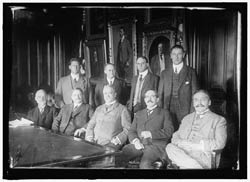
In 1915, utilizing reports by American Attaches and other observers, the Brigadier General published a report on the new status of Aviation in Europe. He warned that airplanes were not only used for information-gathering activities but also now conducted attacks on enemy personnel and material. Scriven and other like-minded men pushed forcefully for the legislative action to create an advisory committee for aeronautics. On March 3, 1915, Congress passed a Smithsonian-backed proposal to create such a committee, the National Advisory Committee on Aeronautics (NACA). The committee immediately designated General Scriven as it first chairman.
While General Scriven served as chairman of the NACA for only two years, aeronautical historians today declare “his brief period there proved to be pivotal.” His most significant accomplishment was establishing an aeronautical research laboratory. Scriven convinced Congress to fund the construction of a research lab. Located in Hampton, Virginia, the Langley Memorial Aeronautical Laboratory was formally dedicated in 1920, utilizing the plans for research, and study of airplane design, construction, and operation, that had been outlined during Scriven’s time as committee chairman. Almost instantaneously, the aeronautical laboratory Scriven and the committee had conceived was considered the premier aeronautical engineering laboratory in the world. The new laboratory placed the NACA at the forefront of aviation research for the next forty-three years, when it was absorbed into the newly created National Aeronautics and Space Administration (NASA) in 1958. Today, the Laboratory remains in use as NASA’s oldest research center, known as the Langley Research Center.
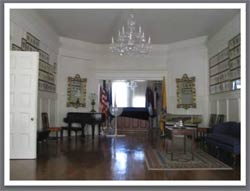
His accomplishments established aviation as a crucial component of the U.S. military, and provided the means for continued aviation research, placing the country at the forefront of aviation through the remainder of the twentieth century.
The townhouse was erected in 1884 as a speculative project by builder George Whiting. The permit for the dwelling described a 3-story, pressed brick building, with a flat roof embellished with a slate mansard and brick cornice. The plan of the house was to include a bow window, one bay window and a tower projection. The building as it appears today includes each of these specifications.
In 1901, Scriven constructed an addition at the north elevation. The addition was completed under the design of architect Henry Simpson and builder Charles A. Langley. The addition was constructed to accommodate a two-story ballroom, which would have been used by Scriven and his family to entertain prominent members of D.C. society, including notable politicians, diplomats, and fellow military officers.
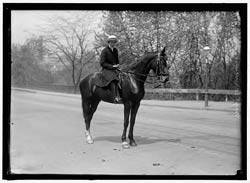
Following Scriven’s period of ownership between 1893 and 1928, the townhouse was utilized by a variety of organizations. On May 15, 1957, the VFW sold the property to the National Society Colonial Dames XVII Century for use as the Society’s Headquarters, serving as a meeting place, library and repository for their records and papers. In addition to their many other historic and educational projects, the Colonial Dames are great stewards of the legacy of Brigadier General Scriven.
Visit the National Park Service Travel American Aviation to learn more about Aviation related Historic Sites.
Last updated: April 9, 2019
